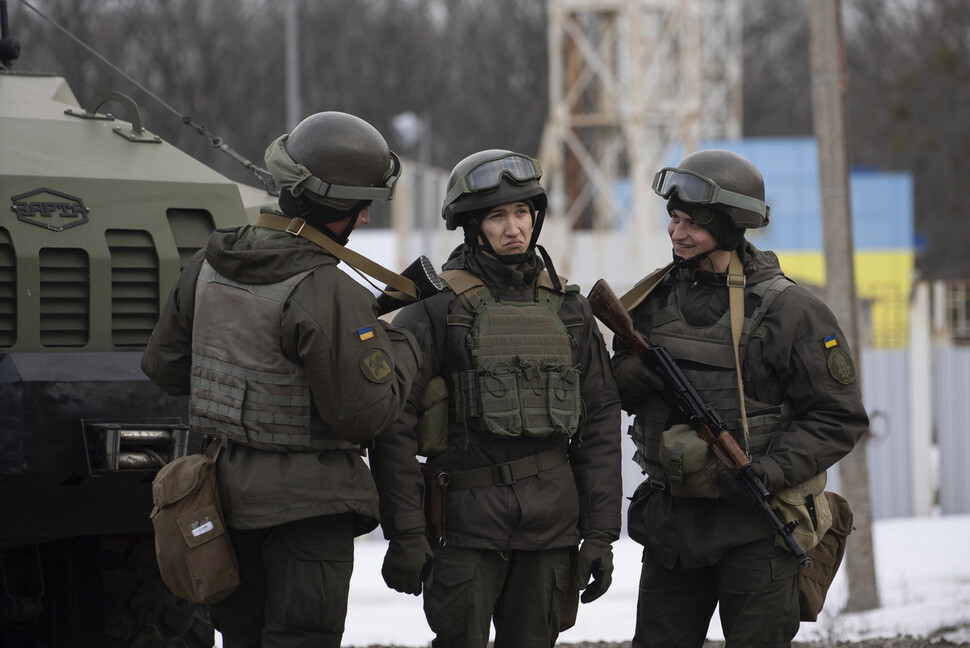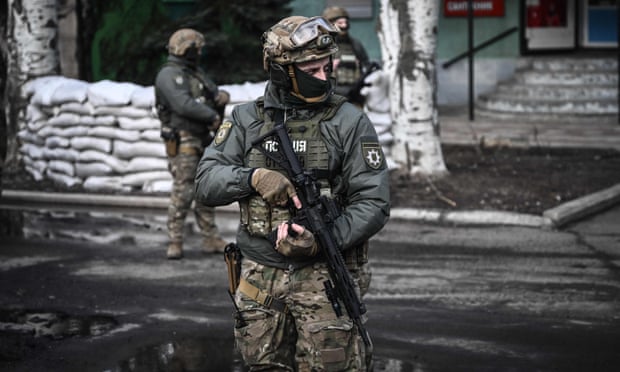
A Crisis in Ukraine, Daybreak for Korea
President Joe Biden’s words came amid widespread concern that Russian troops concentrated near the Ukrainian border would soon launch an attack. There were rumors about specific invasion dates and Russian offensive strategy and finally, on Feb. 18, Biden chose to bring up Russian President Vladimir Putin’s “decision” as well. “We have reason to believe the Russian forces are planning to and intend to attack Ukraine in the coming week — the coming days,” Biden said.*
What has led Putin to make such a decision? Why did Biden make this information public? Will this have any effect on the Korean Peninsula and the rest of East Asia?
Putin is certainly treading on dangerous ground. Russia has already sent signals by positioning more than 100,000 troops near the Ukrainian border and conducting massive military drills. In addition, the Kremlin has announced nuclear force training exercises for its Black Sea fleet and released images of Putin and Belarusian President Alexander Lukashenko watching the exercises. To make matters worse, the escalating conflict between government forces and rebels in Donbass is making war seem all too likely. Regardless of the reason, a full-scale Russian invasion of Ukraine will violate international law and order regarding territorial sovereignty.
In these types of situations, governments must impose all possible sanctions to prevent a catastrophe. If Russia nonetheless decides to invade Ukraine, it will need to pay a corresponding price.*
But at the moment, it is unclear whether Putin has made the dreaded “decision,” or if he will choose to act on that decision.* We must not sit back and wait for things to unfold on their own. The most urgent task at hand is to examine why Putin is resorting to such action and devise a solution to the problem.
As many analysts have pointed out, the Russian president’s risky maneuvers are driven by a combination of factors: Putin’s political ambition; Russia and Ukraine’s domestic politics and economy; Russia and Ukraine’s special relationship; Russian minorities in Ukraine; and the unfinalized the 2014 Agreement on the Settlement of Crisis in Ukraine. Structural violence has given rise to the current crisis.
For example, Russia wields overwhelming military power in comparison to Ukraine. Russia’s defense budget is more than 10 times larger than Ukraine’s. It is one of the reasons why Ukraine is hoping to join NATO and benefit from its collective security. But when we look to the entire world, there is evidence of the potential for even greater structural violence. The joint military power of the U.S. and NATO is more than enough to overpower Russia. The U.S. defense budget is more than 12 times greater than that of Russia. The combined defense spending of Britain, Germany and France — which makes up only a part of NATO’s entire defense budget — is nearly three times that of Russia. Russia may choose to rely on its nuclear weapons, but the viability of that option is being diminished as missile defense systems are being built in Poland and Romania, and medium-range missiles that can strike Moscow within minutes are about to be deployed close to its border. In a sense, Russia is the "Ukraine" of Europe.
We can now see that Putin is trying to turn the table. His actions are intended to showcase Russia’s effort to restore power it lost 30 years ago and its capability to exert influence as before. Putin’s goal is to let the world know it is dissatisfied and to moderate the structural violence permeating the current world order. Although Russia is raising alarm in Ukraine, its real intention is to change the status quo by negotiating proposed demands on the U.S. and NATO.
The U.S., of course, cannot let Putin’s plans come to pass. The U.S. has heavily invested in the current world order and has a reason to maintain it. It will not hesitate to use force if necessary to preserve the status quo. Naturally, it must see Russia’s attempt at turning the table as a threat. By repeatedly emphasizing the possibility of a Russian invasion of Ukraine, the U.S. can direct the spotlight toward structural violence committed by Russia and away from structural violence committed by itself.
The conflict over Ukraine is characteristic of things that happen during a time of global power transition. The rivalry between those trying to overturn the status quo and those trying to defend it will not be confined to Ukraine, nor will it end in a few days or weeks. In East Asia, for example, the Taiwan Strait, the South China Sea and the Korean Peninsula remain potential hot spots in the competition for power. Just as volcanoes erupt from hot spots, conflicts may spark from these locations at any time.
The crisis in Ukraine raises questions of important historical significance for East Asia and the Korean Peninsula. Will they become an active volcano and violently erupt? Or will they manage to open up a new world amid the whirlwinds of chaos? Since the March 1 Movement in 1919, Koreans have been wrestling with the paradox of modernity. And thus, Korea once again finds itself at a crossroad between a familiar future and daybreak it has never experienced before.
*Editor's Note: Russia invaded Ukraine on Feb. 24, after this commentary was published.

